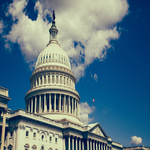The impact of the prescription opioid and heroin epidemic has been severe, affecting thousands of American families each year and costing government agencies billions of dollars. There is no question as whether more needs to be done in the way of curbing the decade plus old crisis. Last week, both lawmakers and law enforcement called for more funding and stronger measures for combating the opioid epidemic at a hearing of the Senate Judiciary Committee, The Wall St. Journal reports. What’s more, the governors, senators and law enforcement officials called for greater access to substance use disorder treatment and stricter prescription opioid prescribing practices.
“I have never seen anything like this, in terms of the epidemic we are facing,” said New Hampshire Senator Kelly Ayotte at the hearing.
Across the country, public addiction treatment facilities have become bogged down, and in some states addicts can wait up to a month for access to a bed. Science driven treatments are one of the greatest weapons at hand in the fight to save lives, having to wait long periods for help can result in a potential overdose and/or death. On top of that, some addicts who make the decision to ask for help may change their mind by the time a bed is finally made available.
At the hearing, speakers pointed out that about 20 percent of opioid addicts receive treatment for their addiction, according to the article. What’s more, the Centers for Disease Control and Prevention (CDC) reports that every day in the United States as many as 44 people die of an opioid overdose death. Naturally, greater funding will allow for the treatment of more addicts and save thousands of lives.
“We are facing a treatment gap of unacceptable proportions. As a nation, we will not stem the rising tide of this public health crisis if only two out of 10 people with an opioid use disorder get the treatment they need,” said Kana Enomoto, acting administrator of the Substance Abuse and Mental Health Services Administration (SAMHSA).
Enomoto notes that there is:
- A Lack of Clinics in Rural Areas
- A Lack of Health Care Providers Licensed to Prescribe Opioid Addiction Medication
- Low Insurance Reimbursement for Addiction Treatment


